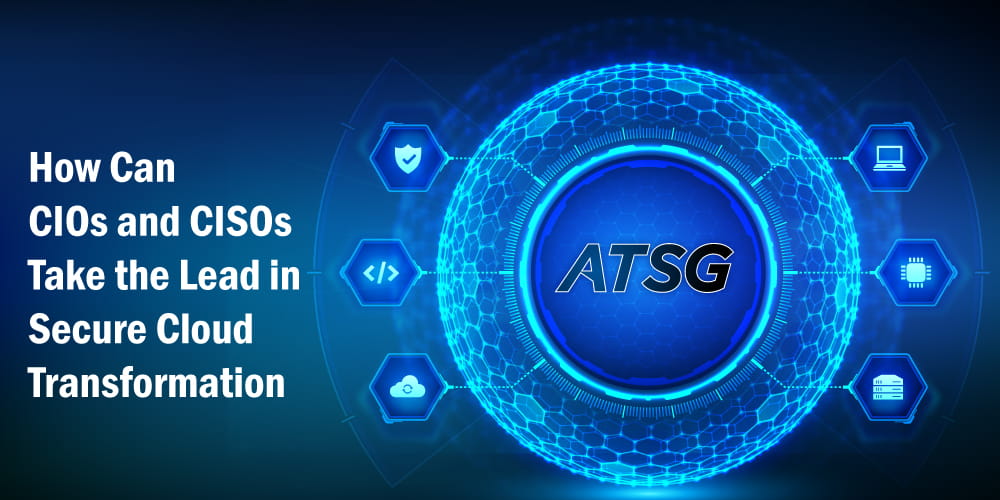With the rise in digital transformation initiatives, Chief Information Officers (CIOs) and Chief Information Security Officers (CISOs) are emerging as central figures. Their goal is to make this integration as effective as possible, especially when it comes to cloud technologies and strategies.

The Role of CIO and CISO in Digital Transformation
CIOs and CISOs play crucial roles in facilitating cloud transformation. The CIO focuses on the overall technology strategy, and oversees the integration of cloud services into the organization’s operations. They ensure that the cloud solution aligns with business goals and enhances efficiency. The CISO, on the other hand, is responsible for maintaining the security of digital assets and data.
In the context of cloud transformation, the CISO ensures that the migration to the cloud is done securely. This involves assessing potential risks, implementing robust security measures, and ensuring compliance with relevant regulations.
Both CIOs and CISOs collaborate to ensure a smooth and secure transition to the Cloud. The CIO ensures that the cloud solution meets the organization’s existing and future needs, while the CISO safeguards data and systems from potential cyber threats. Their combined efforts are essential for a successful and secure cloud transformation.
Digital Growth with CIOs and CISOs
To maintain a digital workplace that is secure and efficient, CIOs and CISOs need to invest in cybersecurity solutions, fostering open dialogue with other executives, working in tandem with legal and risk management teams. This process also involves incorporating security and privacy measures for the development of new business processes.
Additionally, it is highly recommended that CIOs and CISOs take the lead in digital transformation initiatives, encouraging the cultivation of a security-focused culture throughout the organization. By prioritizing cybersecurity efforts through the utilization of appropriate software, and building a strong sense of awareness and responsibility in the workplace, organizations can ensure the protection of their sensitive data.
Developing a Secure and Effective Cloud Strategy
To develop a successful cloud strategy that aligns with business goals and security requirements, the CIO and CISO need to identify potential security risks and compliance concerns. They also need to evaluate technical feasibility and benefits, and decide on public, private, or hybrid cloud deployment models, based on security needs and data sensitivity.
The CISO should establish a robust security framework, while the CIO ensures technology choices align with organizational goals. The CIO should evaluate different cloud providers for their technical capabilities, while the CISO evaluates the security tools, certifications and practices.
Data classification and access controls should be defined, and encryption requirements and solutions should also be outlined and integrated. Plans for handling security incidents and cloud-specific disaster recovery (DR) should be developed, and compliance measures and controls should be integrated across the cloud architecture.
Employees should be educated on cloud security best practices, and technical teams should understand cloud implementations. Continuous monitoring for threats, auditing tools for cloud resources, regular review, and communication of security updates and cloud advancements to stakeholders should be implemented. Finally, the strategy should evolve to accommodate changing threats and emerging technologies.
Future Responsibilities of CIO and CISO
As businesses become more digital, the roles of CIOs and CISOs have grown more complex. Today, CIOs are expected to possess a deep understanding of the business and its tech needs, while CISOs have the critical responsibility of protecting the organization from cyber threats. Many organizations have recognized the value of cybersecurity, and have given CISOs more independence to implement their vision.
CIOs need to have a clear understanding of business needs, especially when it comes to features and quality. On the other hand, CISOs must be able to make quick and strategic decisions when it comes to cybersecurity, as any delays at this stage can introduce risks and compliance issues. Both roles must be able to balance the needs of the business, with the necessary security applications and infrastructures.
Procuring Cloud Cybersecurity Services
Organizations generally lack the in-house capacity, expertise and skills to integrate cloud environments and cybersecurity protocols. This is where ATSG truly shines, by offering well-rounded cybersecurity capabilities that are highly effective for cloud environments. ATSG also offers additional cybersecurity capabilities such as Strategy Formulation, Managed Detection and Response (MDR), and Two-factor authentication (2FA).
ATSG’s highly secure and efficient cloud-based solutions are ideal for organizations looking to adopt cloud computing. We offer customized solutions that help your organization gain the unique capabilities and features cloud services have to offer.
Moreover, with layered application security and robust authentication mechanisms, ATSG’s cloud solutions are not only efficient, but also secure for businesses in today’s complex digital world.
With ATSG’s Managed IT Services, Intelligent Technology Solutions, and robust Cybersecurity capabilities, organizations can benefit from innovative digital tools to enhance productivity, while securing digital infrastructure through resilient protection mechanisms.
ATSG offers Layered Application Security, which offers protection at the most granular level of the enterprise, which is applications and processes. We also offer Managed Detection and Response (MDR) and Zero Trust Architecture.
Contact ATSG for highly resilient Cybersecurity solutions for your enterprise, making the lives of CIOs and CISOs a whole lot easier.




